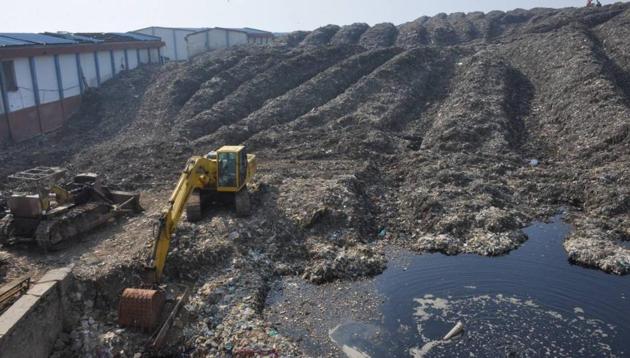Gurgaon: Waste piles at Bandhwari plant shrink after experts’ intervention
Using a process known as windrow composting, the number of leachate lakes (accumulated toxic water) at Bandhwari plant have come down to two, biodegradable waste has been converted into natural fertilizers and the quality of water aquifers are now within the permissible limit for drinking
The Municipal Corporation of Gurugram (MCG) has made significant progress in reducing waste accumulated at the Bandhwari waste plant over the last three years, by using a simple waste decomposing-piling-segregating process since October.

As a result of the process known as windrow composting, the number of leachate lakes (accumulated toxic water) have come down to two, biodegradable waste has been converted into natural fertilizers and the quality of water aquifers are now within the permissible safety limit for drinking.
The transformation holds significance as the Bandhwari waste treatment plant has been lying defunct since 2013, owing to a fire. It has been collecting over 600 tons of daily waste from Gurgaon and Faridabad in the last three years.
Environmentalists had approached the National Green Tribunal (NGT) claiming that the leachate at the plant was polluting the aquifers in Faridabad, Gurgaon, and south Delhi. This led to the NGT directing the MCG to find a solution at the plant.
Read I New landfill next to defunct Bandhwari plant soon
In a bid to clear the waste piles, the MCG hired Almitra Patel, an expert on solid waste management, and Raaginii Jaain, an expert on waste segregation in October 2016.
The MCG built a concrete wall around the plant to check the flow of leachate to the neighbouring Aravalli forest areas. On the recommendation of the experts, a bioculture spray was applied at the site at a daily cost of Rs 4 lakh. A bioculture spray is a microbial additive that provides controlled decomposition, reduces leachate volume and disinfects pathogens.
Crop fish was then introduced into the leachate to removed the pollutants and bring the alkaline level in the water body within the permissible limit -- less than 6.5 ph.
The MCG said once the water safety level was assured, earthmovers dug trenches in the garbage piles that first led to leachate flowing out. Then, waste was collected and spread over the maximum surface area available, exposing it to sunlight and air.
“From the dried waste pile, plastics and other non-biodegradable materials were segregated. Organic waste has been converted into manure and processed into natural fertilizers,” Jaain said.
The remaining two leachate lakes, the MCG said, will also be taken care of once the approved waste-to-energy plant is set up there. The waste-to-energy process involves using solid waste from the landfill and producing refuse-derived fuel (RDF), which can power a boiler to generate 9MW electricity and provide power to approximately five sectors in the city.
.




